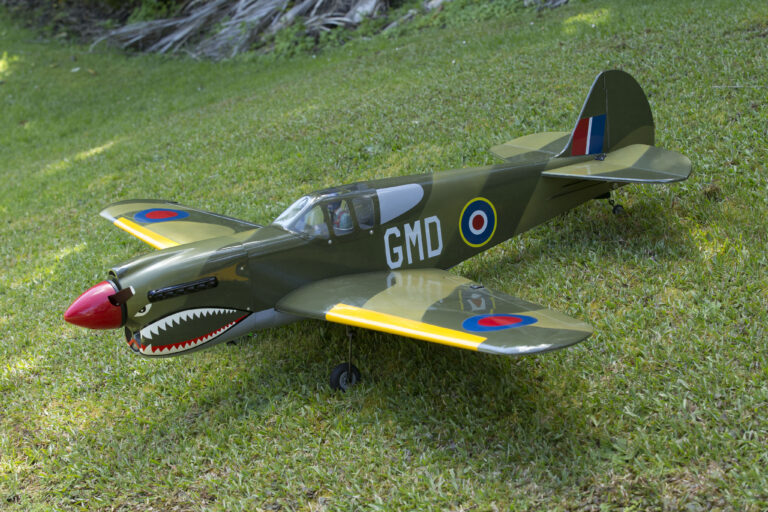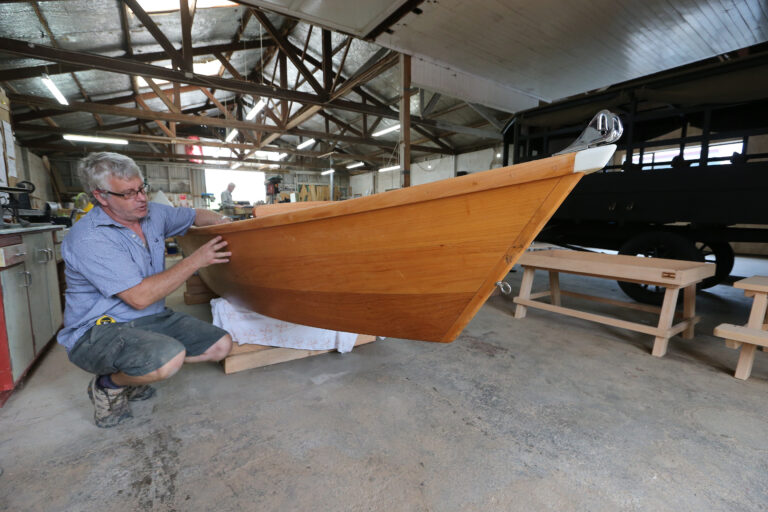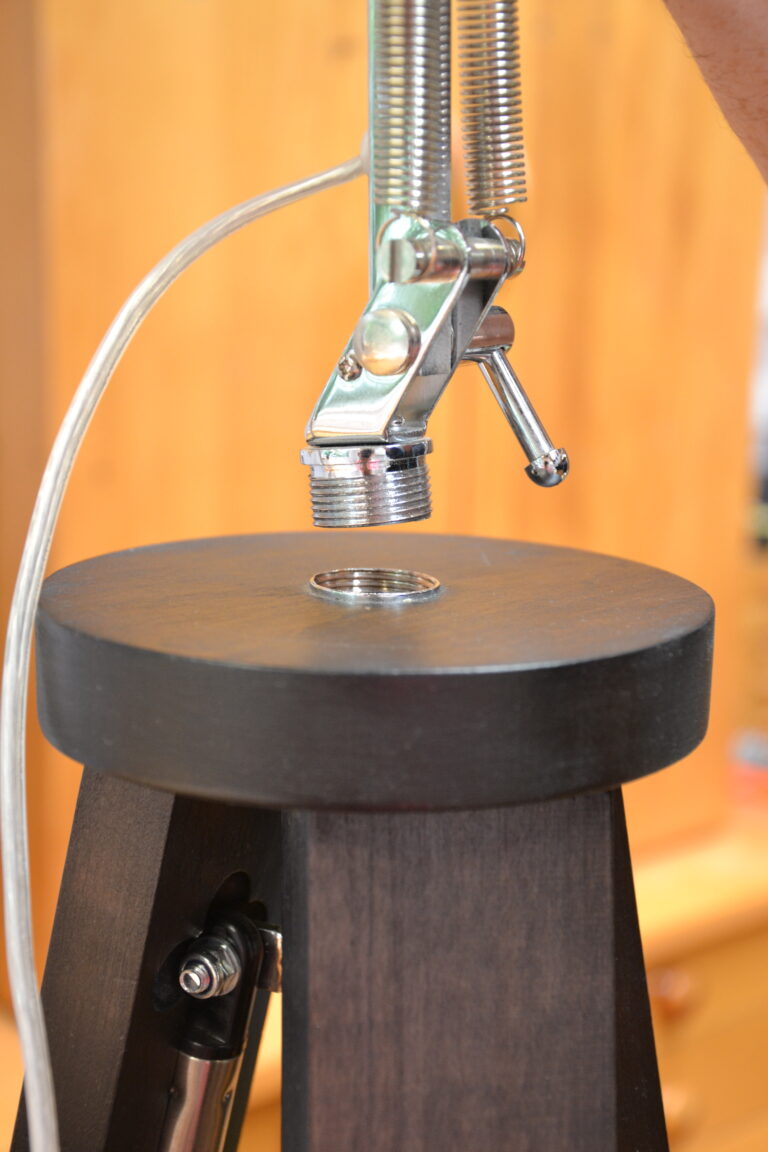Build a solid, aluminium bound road case for that fragile gear
By Jude Woodside
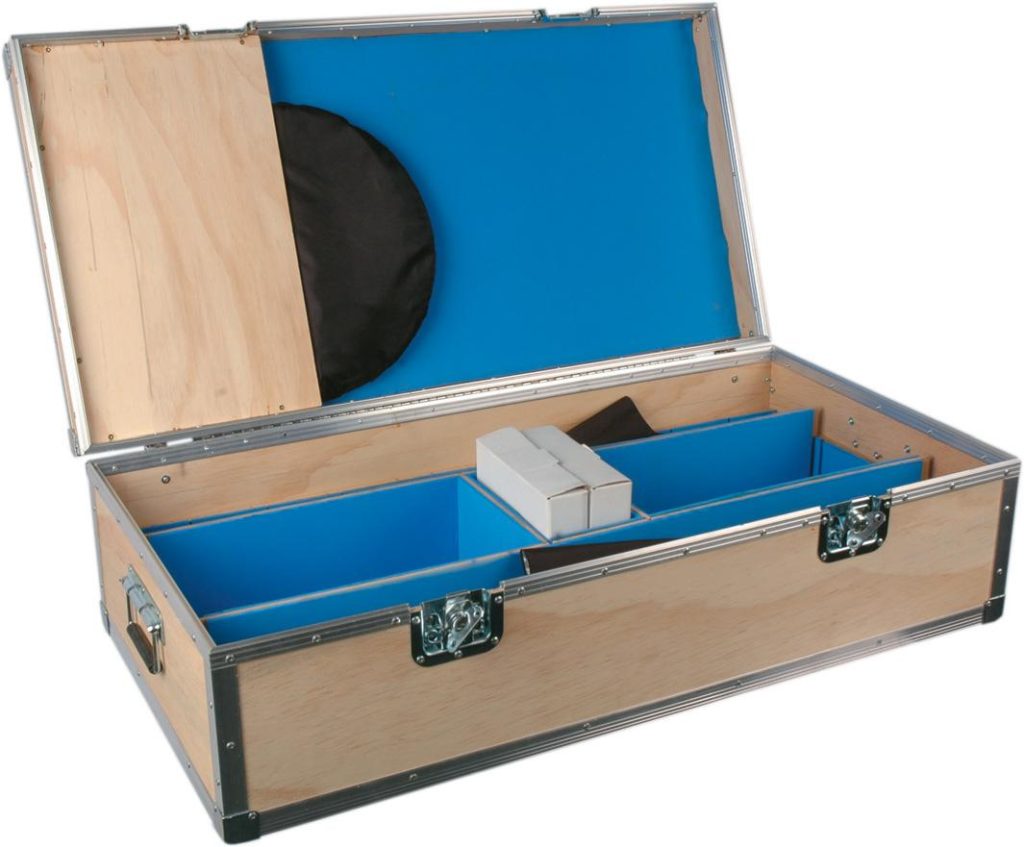
The photography department here at The Shed required a means to contain and move all our
studio lights as simply as possible.
The collection of lights and accessories is growing and it made sense to keep them all in a road case for transport and organisation. This I thought would also be a good opportunity to build a case
and might be a basis for those who need to make other custom cases for sound gear, tools, or guns.
The first order was to find a supplier of weatherproof mouldings such as usually make up the openings and keep them free from dust and weather.
This was far harder than I had anticipated and eventually tracking them through the Penn Elcom website in the United States I located the only New Zealand supplier, Live Sound Manufacturing Ltd, based in Ponsonby [www.livesound.co.nz/]
Live Sound not only supply all the mouldings and parts required they make road cases for most of New Zealand’s bands and have significant overseas orders for companies as diverse as motor racing teams and gun collectors.
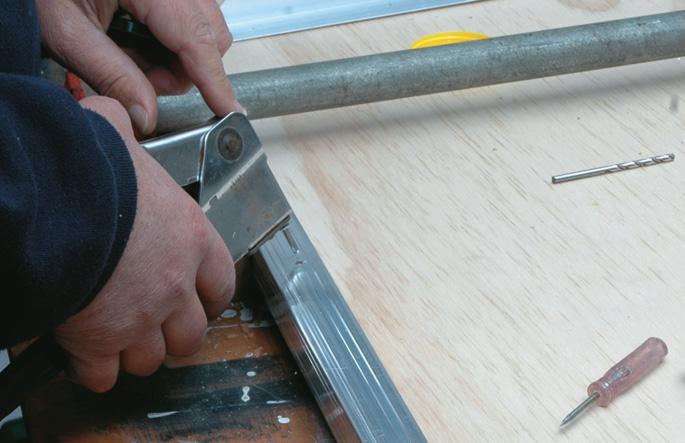
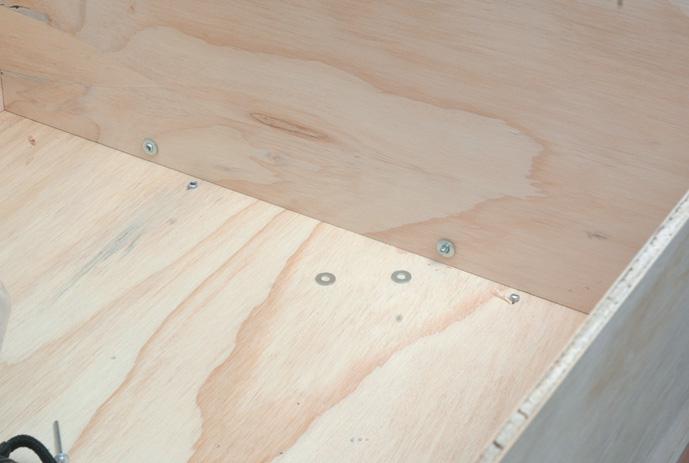
Weathertight
The weathertight lip moulding I selected requires a 7 mm filler ideally suited to thin ply although in hindsight I should have gone with an aluminium or plastic laminate on a ply backing. I ordered standard untreated Radiata ply instead since it happened to be on special at Plyman [www.plyman.co.nz/]
The first stage is to measure the equipment you mean to house and lay it out in the space required. I allowed some room in the lid to house umbrellas and various bits of material such as diffuser material.
The overall dimensions of the case are 500 mm x 1000 mm x 320 mm. The case is intended to hold
two 600w lights with stands, reflectors, cables, and diffusers and is intended to allow for at least one
smaller light. It will also house the necessary extension cords, a small backdrop sheet, and some folding reflector boards that go to make up the kit.
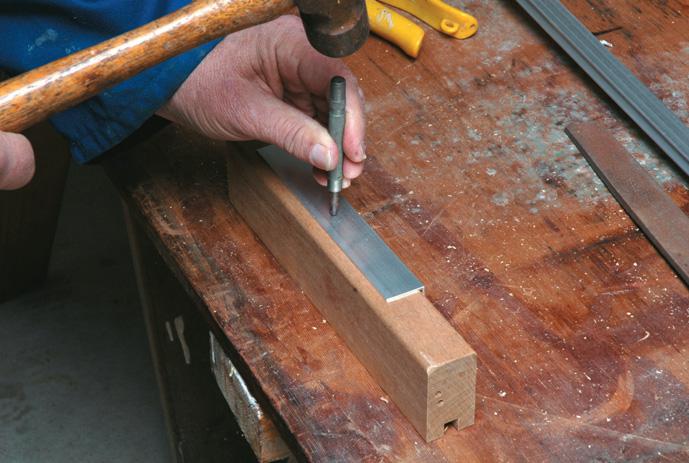
Paint
The first step is to paint any bare ply, something I neglected to do in my haste and I now repent at leisure.
Cut the pieces of ply to size. Cut the bottom edge pieces from angle alloy to size. You can mitre
the ends as I have or leave them as butt joints which will be hidden by the corner pieces later.
Drill the alloy and run the hole through the ply, too, remembering to leave sufficient space to include the sides. Place a rivet in the holes and add a small washer to the end of the rivet. Fasten the rivet. The washer assists with keeping the rivet in place.
Next glue a side piece to the bottom piece and temporarily clamp and drill and rivet the alloy again. It’s important to use glue that will retain some flexibility and not set hard so it can crack with movement. I used Gorilla Glue polyurethane glue. The usual PVC Aliphatic resins won’t work as well.
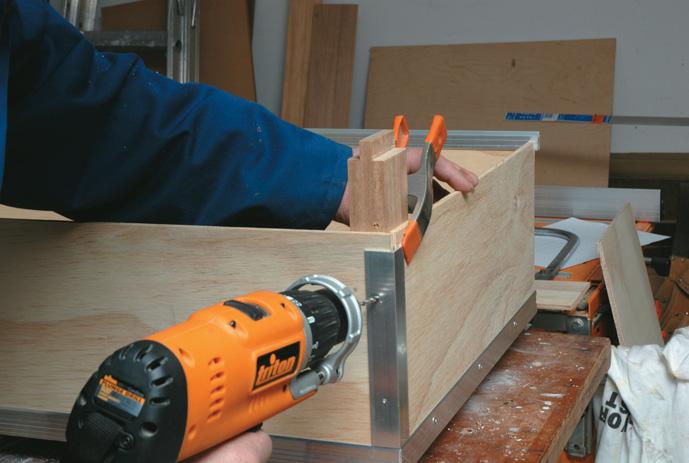
Lip
Once the base is done add the weathertight lip. This is where it pays to use a mitre or an aluminium
cutting blade in a mitre saw.
The latter was my preference. It allowed for a greater degree of accuracy with less effort. It’s important to use a proper non-ferrous metal cutting blade to endure a smooth cut.
I have used bevel joins throughout this construction, although since I have used corner plates for added protection it isn’t strictly necessary.
Live Sound actually doesn’t bother with bevelling the ends of the angle alloy since the corner plate hides the joint. You do have to bevel off the corner where the two edge pieces meet to fit the corner plates. I did this with a file, to match the flat on the edge of the corner plate.
With the base cut, corner uprights are also cut from the angle stock. In this case, I already had some alloy moulding to hand and elected to use this since my supply of moulding was otherwise limited. The uprights are fixed in place.
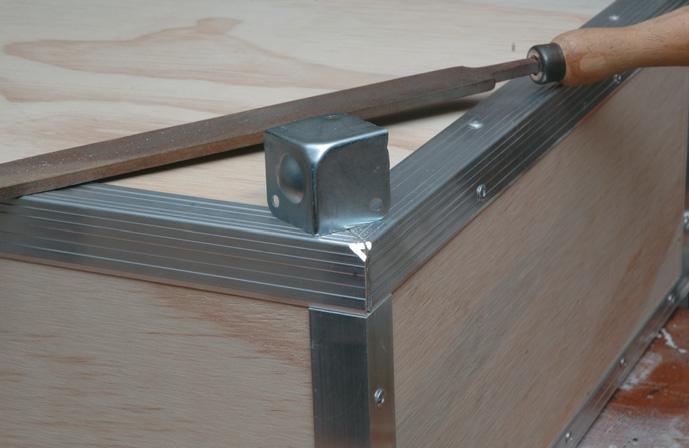
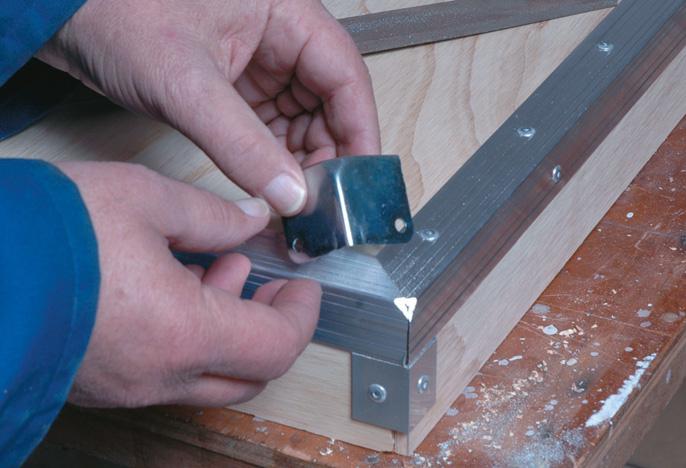
Locks
Mark out the position of the locks and cut these out of the plywood.
The lip can then be cut to fit the new front layout and a hinge attached at the rear. The locks actually protrude above the level of the ply. It pays to test this first. I didn’t, assuming that the two fitted into the ply structure only to find a large gap once I made and test fitted the lid. The locks require 5 mm rivets which are a true test of your hand strength. After popping some 100 rivets you begin to wish for a better way. I did actually buy a more modern and heavier-duty contractor-grade riveter but found my cheap, 20-year-old model was actually easier to use.
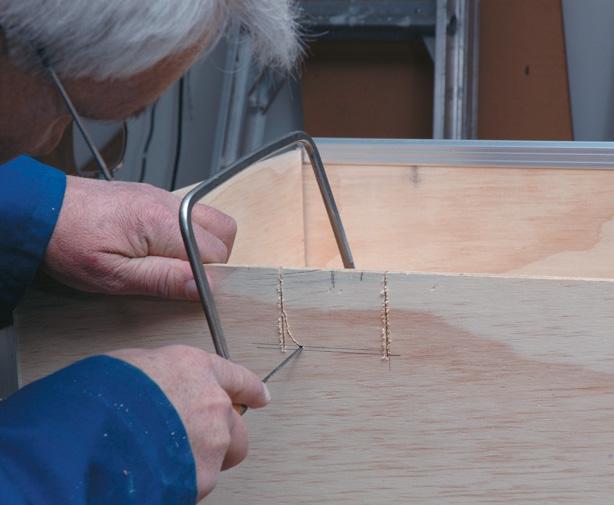
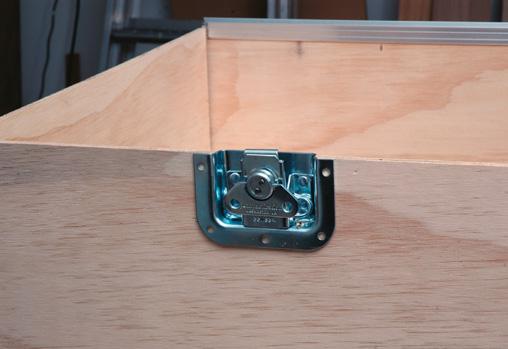
Hinge
For the hinge, I used both a piano hinge and a pair of strut hinges. The strut hinges allow the lid to be laid open without requiring supports. Once again, they are attached with rivets. The spring-loaded handles are connected to the ends, again with washers or a backing plate. The lid is constructed in the same manner as the base although I have lined it with 5 mm foam on the top and added a pocket to hold reflectors and cables.
The internal partitions are made from thin gauge timber to which PEV hi-density foam has been glued. The partitions fit into slots cut at regular intervals in a foam-faced board glued on around the sides of the case. The idea was to allow the case to be reconfigured as the equipment changes.
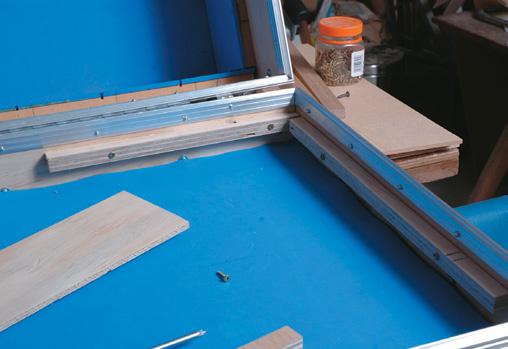
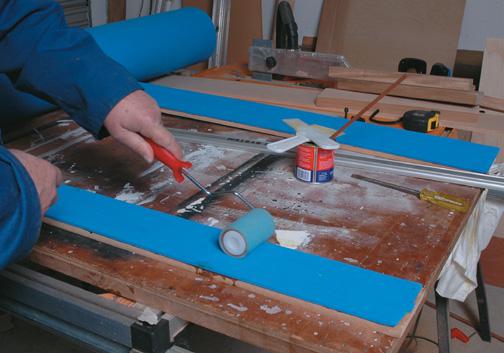
Foam
The base has 10 mm foam laid to absorb shocks. The rest of the partitions use a 5 mm hi-density foam attached with Ados FP2 contact cement. After cutting the boards and the foam to size, work out where your pieces will intersect and cut a notch here to allow the pieces to fit and support each other.
Remember to allow for the width of two pieces of foam plus the board when you come to lay up the longer pieces for foam. I found I was able to adjust the mitre saw and, using the same alloy blade, I could cut the foam without cutting through the board. I glued the cross-pieces in place for stability since there is little else to hold the middle partitions steady.
Coat one side of a board and a piece of pre-cut foam in the contact cement. Wait till the glue is tacky (without sticking to your fingers) then carefully apply the foam to the board, carefully since the contact is instantaneous and permanent.
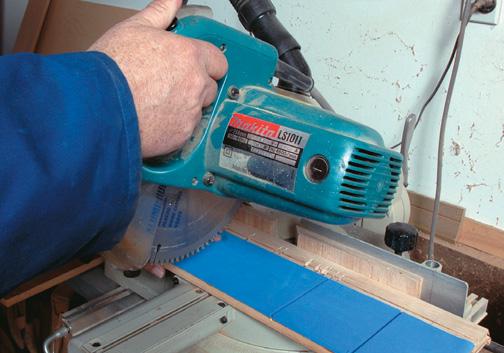
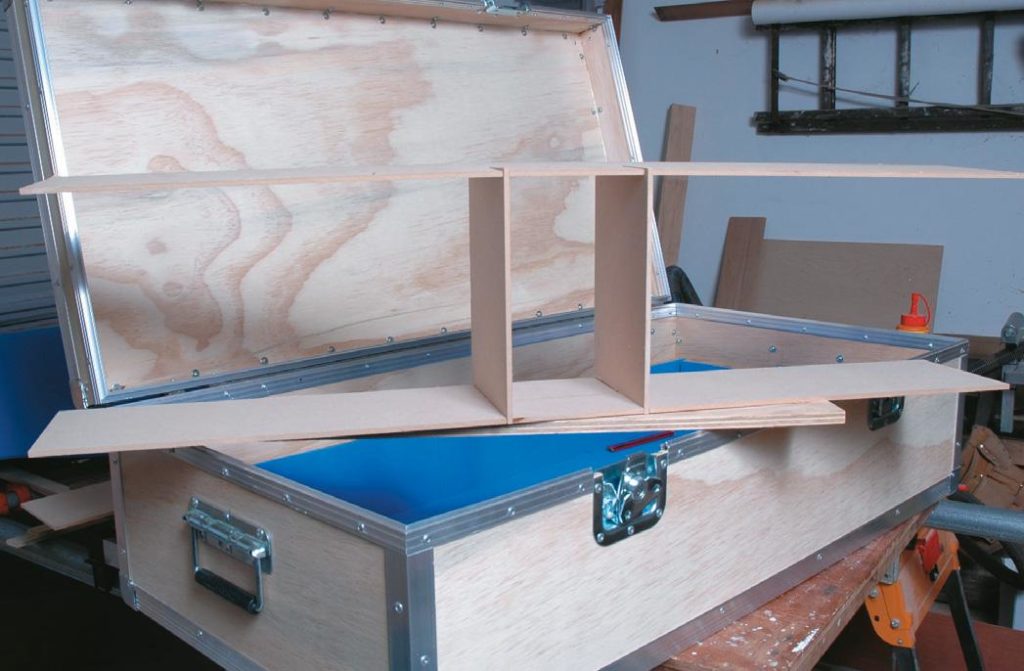
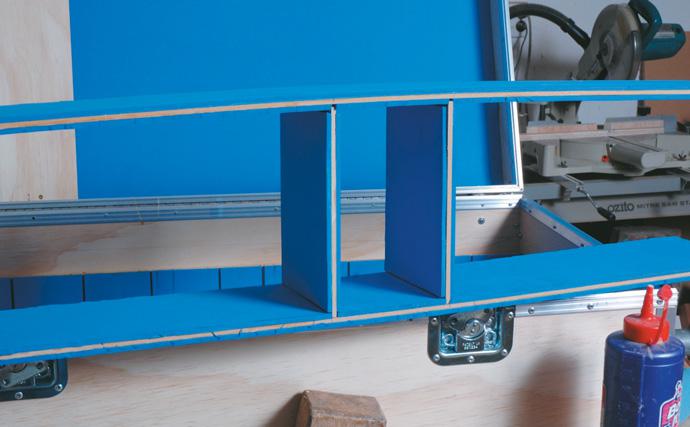
Smaller
In the case of the side pieces, I glued the foam on and cut the slots in the piece on the table saw before attaching them to the sides of the case with wood glue. I left about 15 mm of board free on each end to allow it to slot better into the foam on the board.
The case itself looks the part but in hindsight, I should probably have made it smaller. A lighter filling material would also have been a bonus.
The case is marginally too big and so quite heavy and slightly difficult to move. It will also require wheels.
It does, however, contain all the equipment we need in one place. It is solid and provides adequate protection for the equipment.

